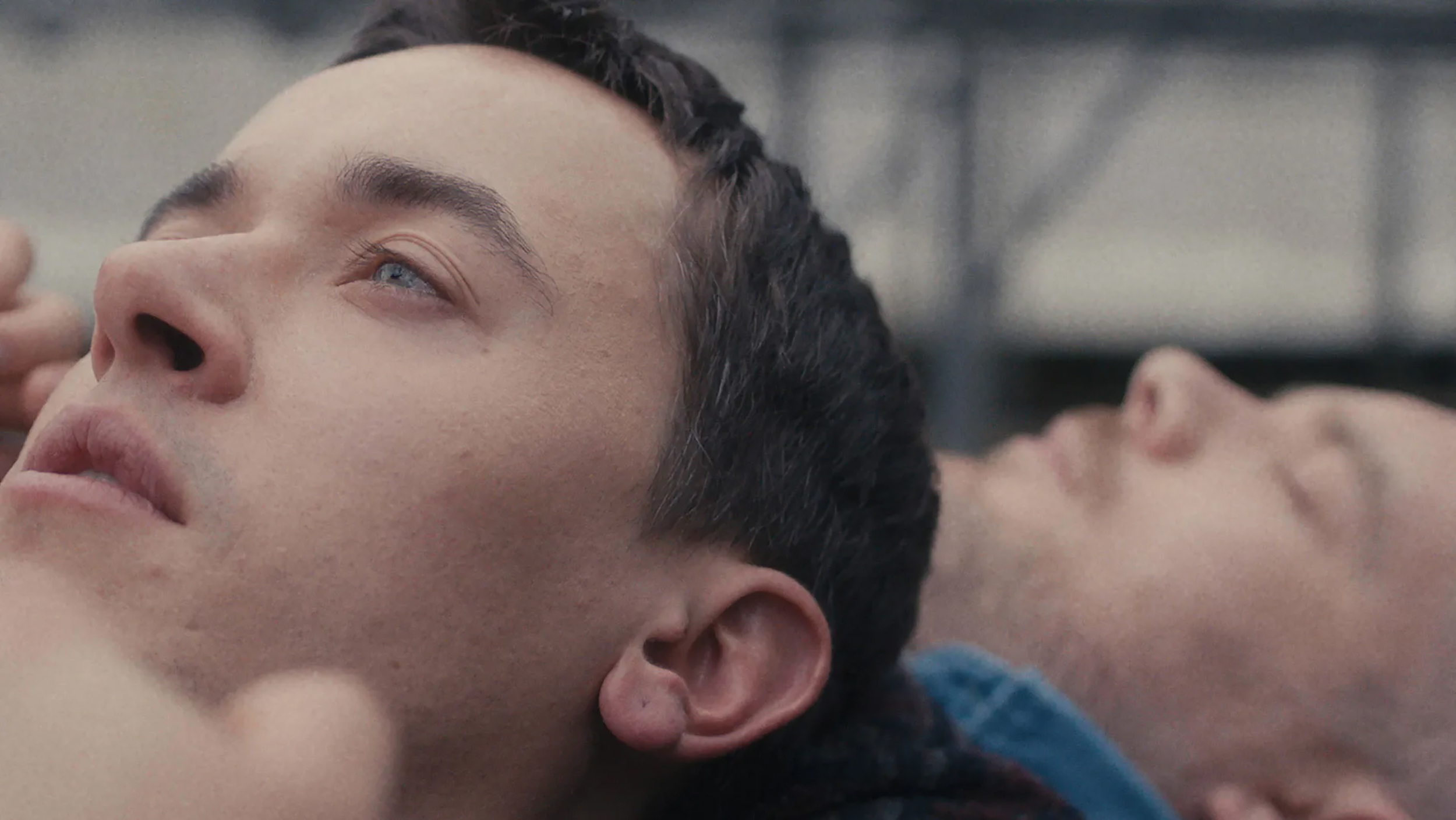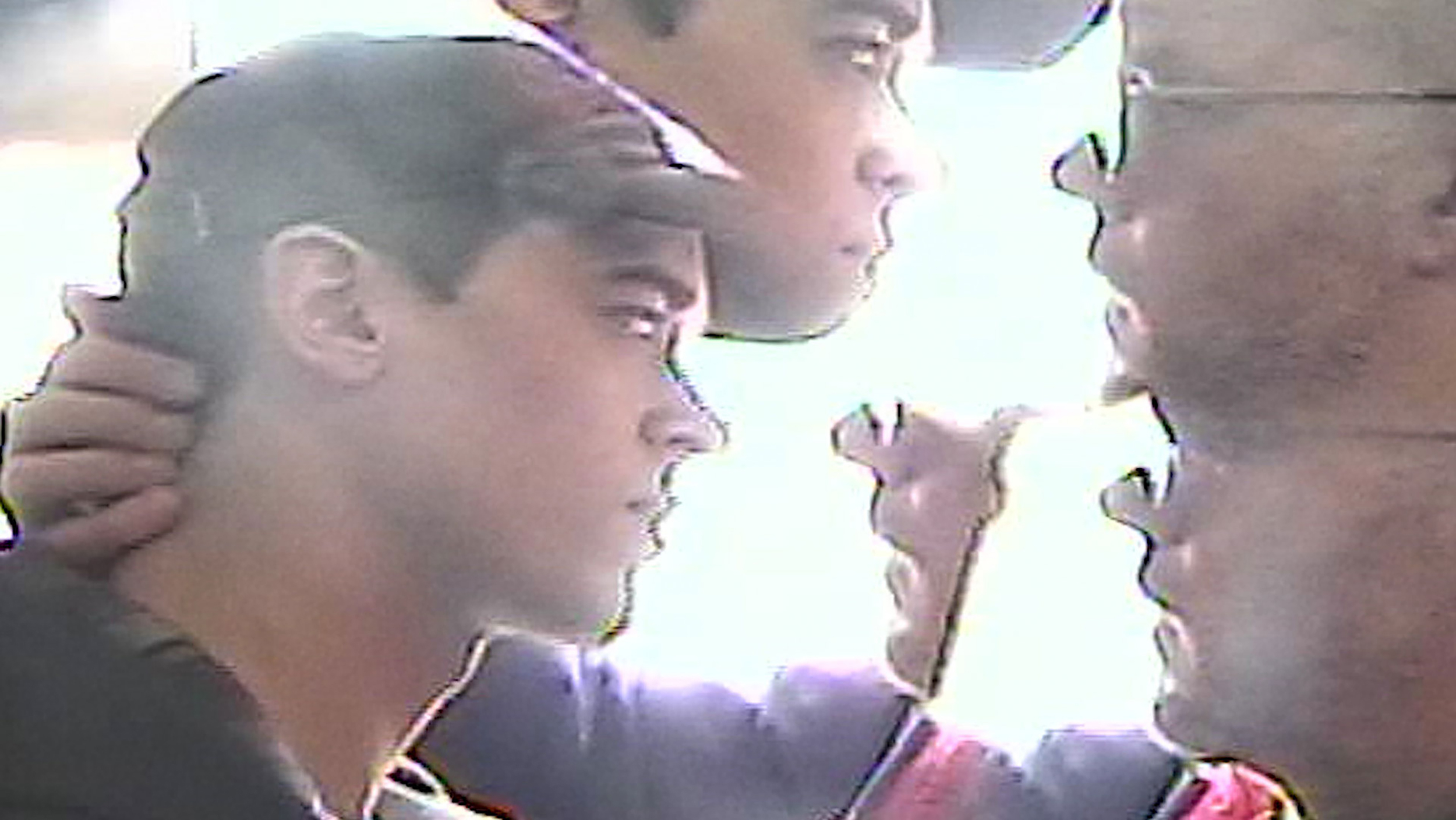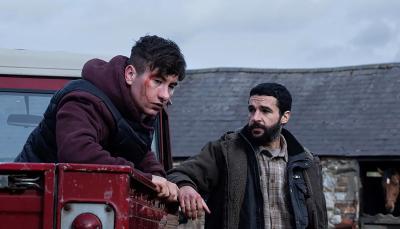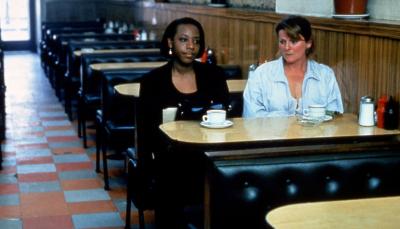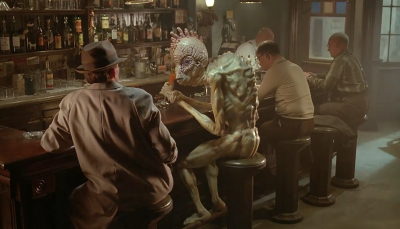'Plainclothes's Fancy Footwork to Sidestep Cliches Only Finds Different Pitfalls
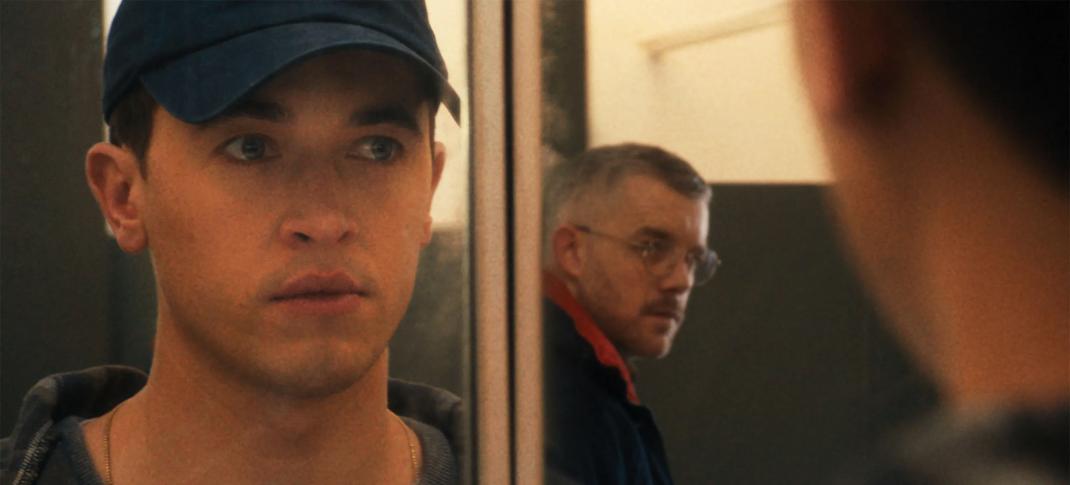
Tom Blyth as Lucas and Russell Tovey as Andrew in 'Plainclothes'
Sundance
There’s a familiar and questionable trope at the heart of Plainclothes – someone exhibiting homophobic behavior or responsible for anti-LGBTQ+ violence is secretly repressing their own queerness. To writer-director Carmen Emmi’s credit, the film tries to sidestep the most egregious hallmarks of the trope, but in doing so, the recently premiered Sundance film creates a new batch of problems it’s unable to solve. Lucas (Tom Blyth) is a genial but timid closeted man in 1990s New York state, and not a textbook internalized homophobe – although he doesn’t counteract his self-denial with outbursts of bigotry, he has agreed to be a tool of the homophobic state.
Lucas spends his working hours in a local mall pretending to cruise. He courts gay men into public toilets and makes a plausibly deniable pass at them. Hence, they make the first provable move, then signal to his fellow officers to arrest them for public indecency. As police policy, it’s inhumane and criminal – a transparent method of persecuting gay men with aggressive entrapment, and American cops did it for nearly a century.
When Lucas meets Andrew (Russell Tovey), a confident, experienced older gay man, he feels a keen desire that supersedes his police protocol and pursues an ill-advised but revelatory romance. Here, the volatile strands of Plainclothes – the pressures of conformity, surveillance, and the police state – collide after coexisting under unstable but controlled conditions. The film is primarily shot in tight, intimate compositions that rarely give the sense of being surveilled, rather of nightmarish proximity, and cinematographer Ethan Palmer adds outbreaks of stark red lighting, lens flares, and projection tricks to color Emmi’s vision of a man stuck between his own truth and conservative order.
The many frustrations of Plainclothes boil down to its unwillingness to complicate its personal drama. It’s a film that features voyeurism, queer power dynamics, non-linear storytelling, and contrasting visual textures. Still, as the drama unfolds over a nicely paced ninety minutes, its most compelling elements are used in service of Lucas’ coming-out story.
Blyth and Tovey have effective chemistry, and Lucas follows his paramour’s lead in the rhythms and rituals of 20th-century cruising. Both characters feel authentic to a period before the modern popularity of gay rights movements (homosexuality was only decriminalized on the federal level in 2003!) and are still in the grips of the AIDS epidemic. Blyth is a capable performer, showcasing the punishing effects of repression and denial in a conservative work and home life. Still, it’s telling that Tovey – whose character is afforded independence from Emmi’s subjective visual style – is a far more compelling screen presence: we are not being told exactly what he’s feeling whenever he’s on screen.
Take one of Plainclothes’ memorable but superficial visual tricks: cutting between a clean contemporary style and invasive, disorienting angles from 90s-era consumer camcorders to signal the intrusive, off-kilter panic and scrutiny of Lucas’ perspective. There’s a gulf between the clean attractiveness of how Palmer shoots the drama and the abrasive lo-fi texture of the Sony Hi8 segments. Still, the added visual and emotional friction accessed by the latter undermines the comparatively rigid and conventional style of the former. These moments of digital frenzy are reserved only for when Plainclothes wants to instruct us that Lucas’ hold over his job, family life, and affair is slipping. However, these loose, unpolished visuals are too limited and didactic to expand the film’s thematic scope.
Blyth’s convincing and committed portrayal of pent-up anxiety and repression is a touch redundant when Emmi hammers home his mental state with camcorder inserts – using “unattractive” visuals as a stand-in for a troubled interiority feels like a too-simplistic use of “non-cinematic” digital cinematography. It’s hard to make a great film about personhood under surveillance when the visual language is this strictly defined and oddly hierarchical.
At the very least, the clumsiness of Plainclothes’ visual design speaks to the enthusiasm and imagination of an emerging filmmaker; the fact that the narrative incrementally narrows its scope throughout is less defensible. Lucas’ romantic pursuit of Andrew mimics the structure and tension of his police work – he conceals his identity and jeopardizes his target’s safety and privacy – which hints at how his desire has internalized some aggressive traits of his work.
But too much of Plainclothes’ treatment of police violence is constrained to scenes explaining ideology and procedure – they provoke rage in the audience but feel incidental to the film’s climax, where Lucas stands up to homophobia that finally explicitly implicates him. Plainclothes too easily separates its character arc with the system he is a part of, chasing individual clarity rather than mining the horror a queer man woven into and appropriated by a regime larger than himself. Emmi understands the cinematic construction of erotic tension and obsession, but Plainclothes can only provide Lucas with a cathartic release because he has been made the film’s only target.

